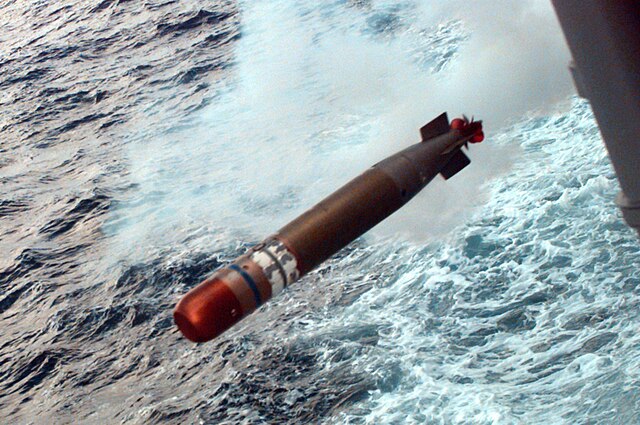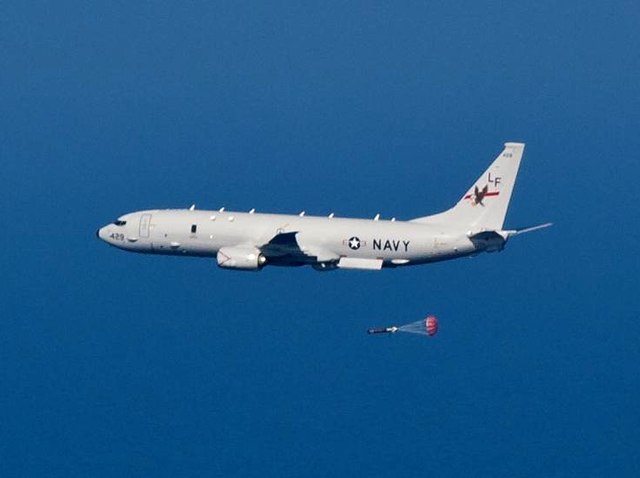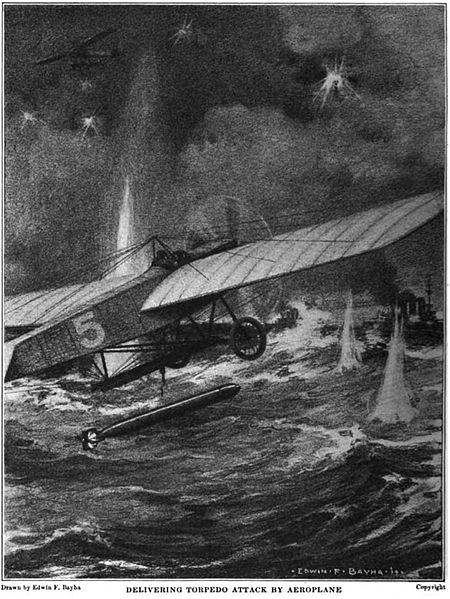The Mark 46 torpedo is the backbone of the United States Navy's lightweight anti-submarine warfare torpedo inventory and is the NATO standard. These aerial torpedoes are designed to attack high-performance submarines. In 1989, an improvement program for the Mod 5 to the Mod 5A and Mod 5A(S) increased its shallow-water performance. The Mark 46 was initially developed as Research Torpedo Concept I, one of several weapons recommended for implementation by Project Nobska, a 1956 summer study on submarine warfare.
A Mk 46 exercise torpedo launched from USS Moosbrugger.
A Mark 46 Mod 5A torpedo is inspected aboard the guided missile destroyer USS Mustin.
A French Lynx. helicopter carrying a Mk 46 torpedo.
A P-8A Poseidon of VP-16 dropping a Mark 46 torpedo
An aerial torpedo is a torpedo launched from a torpedo bomber aircraft into the water, after which the weapon propels itself to the target.
An aerial torpedo dropped from a Sopwith Cuckoo during World War I
In 1915, Rear Admiral Bradley A. Fiske conceived of the aerial torpedo
The Short Type 184 was the first torpedo aircraft when built in 1915
Breakaway wooden fins help stabilize the torpedo in the air. They grip the metal fins only by friction, and are forced off upon entry into the water.








